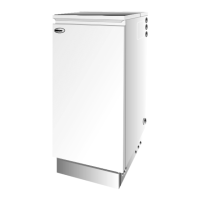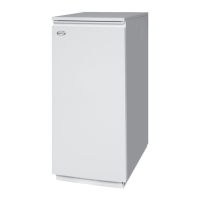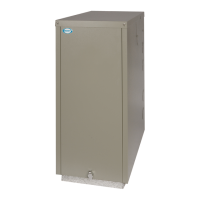86
Note 1 - Is heating system and
boiler full of water and vented?
The central heating system must be free
of any air locks. Ensure auto air vent
on secondary heat exchanger (at left
rear of the boiler) is open and vented.
Vent the primary heat exchanger on the
heating flow pipe.
If installed on a sealed system: check
expansion vessel charge pressure and
correct as necessary. Check system
pressure and top-up as necessary.
Refer to Section 6 for sealed system
details.
Note 2 - Is the heating thermistor
correctly fitted?
Isolate electrical supply and remove
boiler control panel cover.
Check that the heating thermistor, and
the overheat thermostat sensor, are
correctly fitted into the pocket (inside
the boiler control panel). Refer to
Section 10.3.1. Ensure that both are
held in place with the retaining clip
supplied.
Also, check the condition of the
thermistor and the overheat thermostat
capillary for any damage, replace if
necessary.
Note 3 - Is there continuity between
the overheat thermostat terminals?
With electrical supply isolated, reset
the overheat thermostat and check
electrical continuity across the
terminals. If no continuity found, replace
the overheat thermostat.
Note that the thermostat continuity can
be checked by removing the 7-way plug
(plug No. 1) from the socket on the
left of the burner and testing between
terminals T1 and T2. Refer to Section 8
and Figure 8-5.
Note 4 - is the circulating pump
operational?
With the burner ON/STANDBY switch
set to ‘STANDBY’, reconnect the power
supply to the boiler and check that the
heating system controls are ‘calling’.
Set the switch to ON and the pump
should be running.
If not check that:
• the pump is vented
• there is power to the pump
• that the pump is not seized/stuck
If pump has failed then replace it.
Note 5 - Is there any restriction to
flow from the boiler?
Check that all valves on the heating
circuit are open and that there are no
blockages.
Rectify as necessary.

